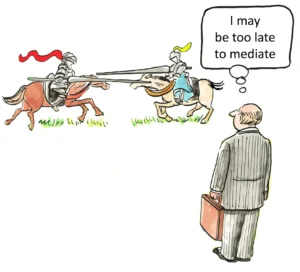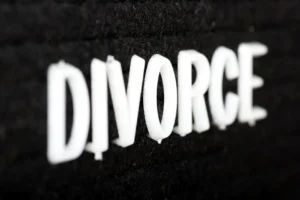Plea of Insanity: Legal Standards and Consequences
The insanity defense is a complex and controversial aspect of criminal law that has long fascinated legal scholars, mental health professionals, and the general public alike. This legal doctrine allows defendants to argue that they should not be held criminally responsible for their actions due to a severe mental illness or defect at the time of the offense. The plea of insanity raises profound questions about criminal culpability, mental health, and the intersection of law and psychiatry.
At its core, the insanity defense is based on the principle that individuals who lack the mental capacity to understand the nature and consequences of their actions or to distinguish right from wrong should not be punished in the same manner as those who possess such capacity. This concept has roots dating back centuries in Anglo-American law, but its application and standards have evolved significantly over time.
The modern insanity defense emerged in the mid-19th century with the landmark case of Daniel M’Naghten in England. M’Naghten, suffering from paranoid delusions, attempted to assassinate the British Prime Minister but mistakenly killed his secretary instead. His acquittal on the grounds of insanity led to the formulation of the M’Naghten Rule, which became the foundation for insanity defenses in many jurisdictions.
Under the M’Naghten Rule, a defendant could be found not guilty by reason of insanity if, at the time of committing the act, they were laboring under such a defect of reason, from disease of the mind, as not to know the nature and quality of the act they were doing, or if they did know it, that they did not know what they were doing was wrong. This cognitive test focused on the defendant’s ability to understand the nature of their actions and distinguish between right and wrong.
Over time, various jurisdictions have modified or expanded upon the M’Naghten Rule, leading to a range of standards for the insanity defense across different legal systems. In the United States, for example, some states have adopted the Model Penal Code test, which includes both a cognitive and a volitional component. This test asks whether, as a result of mental disease or defect, the defendant lacked substantial capacity to appreciate the criminality of their conduct or to conform their conduct to the requirements of the law.
The insanity defense has been the subject of intense debate and scrutiny, particularly in high-profile cases that capture public attention. Critics argue that the defense can be abused by defendants seeking to evade responsibility for their crimes, while supporters contend that it is a necessary safeguard to ensure that mentally ill individuals are not unjustly punished for actions beyond their control.
One of the key challenges in applying the insanity defense is the difficulty in assessing a defendant’s mental state at the time of the offense, which may be months or even years before the trial. This often requires extensive psychiatric evaluations and expert testimony, leading to complex and sometimes conflicting evidence presented in court.
The consequences of a successful insanity defense can vary depending on the jurisdiction. In many cases, defendants found not guilty by reason of insanity are committed to psychiatric institutions for treatment rather than being sent to prison. The duration of this commitment may be indefinite, potentially lasting longer than a prison sentence for the same offense.
It’s important to note that the insanity defense is relatively rare and has a low success rate. Studies have shown that it is used in less than 1% of criminal cases, and of those, only a small percentage result in acquittal. Despite its infrequent use, the insanity defense remains a crucial component of criminal law, reflecting society’s recognition that mental illness can profoundly affect an individual’s capacity for criminal responsibility.
The legal standards for the insanity defense vary across jurisdictions, with different tests and criteria used to determine whether a defendant qualifies for the defense. In the United States, federal law and many states use some version of the M’Naghten Rule or the Model Penal Code test, while others have developed their own standards or abolished the insanity defense entirely.
The Federal Insanity Defense Reform Act of 1984 narrowed the federal insanity defense standard in response to public outcry following John Hinckley Jr.’s acquittal for the attempted assassination of President Ronald Reagan. The Act placed the burden of proving insanity on the defense and eliminated the volitional prong of the Model Penal Code test, focusing solely on the defendant’s ability to appreciate the nature and wrongfulness of their actions.
Some states have adopted the “guilty but mentally ill” verdict as an alternative to the traditional insanity defense. This verdict acknowledges the defendant’s mental illness while still holding them criminally responsible for their actions. Defendants found guilty but mentally ill are typically sentenced to prison but are supposed to receive mental health treatment during their incarceration.
The role of expert testimony is crucial in insanity defense cases. Forensic psychiatrists and psychologists are often called upon to evaluate the defendant’s mental state and provide expert opinions on whether they meet the legal criteria for insanity. These evaluations typically involve extensive interviews with the defendant, review of medical records, and consideration of the circumstances surrounding the offense.
One of the challenges in insanity defense cases is the potential conflict between legal and medical definitions of mental illness. While psychiatrists may diagnose a defendant with a specific mental disorder based on clinical criteria, the legal standard for insanity is ultimately a legal determination made by judges or juries, not a medical one.
The burden of proof in insanity defense cases varies by jurisdiction. In some states, the prosecution must prove the defendant’s sanity beyond a reasonable doubt once the defense has raised the issue. In others, the defense bears the burden of proving insanity by a preponderance of the evidence or by clear and convincing evidence.
Public perception of the insanity defense is often influenced by high-profile cases and media portrayals, which can lead to misconceptions about its frequency and effectiveness. Many people overestimate how often the defense is used and how successful it is, contributing to skepticism and calls for reform.
The consequences of a successful insanity defense extend beyond the courtroom. Defendants found not guilty by reason of insanity are typically committed to psychiatric institutions for treatment, with the goal of rehabilitating them and ensuring public safety. The length of this commitment can be indefinite, and in some cases, individuals may spend more time institutionalized than they would have if convicted and sentenced to prison.
The process of conditional release for individuals found not guilty by reason of insanity is complex and varies by jurisdiction. It typically involves ongoing psychiatric evaluations, court hearings, and strict conditions to ensure the individual’s continued treatment and compliance with medication regimens. The transition back into society can be challenging, with many facing stigma and difficulties reintegrating.
The insanity defense raises important ethical questions about criminal responsibility and the treatment of mentally ill offenders. Critics argue that the defense can be used to excuse heinous crimes, while supporters contend that it is a necessary protection for those who truly lack the capacity to understand or control their actions due to severe mental illness.
The relationship between mental illness and criminal behavior is complex and multifaceted. While the majority of individuals with mental illness are not violent or criminal, certain severe mental disorders can increase the risk of criminal behavior when left untreated. This underscores the importance of accessible mental health care and early intervention to prevent criminal acts by individuals experiencing severe psychiatric symptoms.
The insanity defense intersects with broader issues of criminal justice reform and the treatment of mentally ill individuals within the legal system. Many advocates argue for increased funding for mental health services, specialized mental health courts, and alternatives to incarceration for offenders with serious mental illness.
The role of neuroscience in insanity defense cases is an emerging area of interest. Advances in brain imaging and our understanding of the neurobiological basis of behavior are beginning to influence how courts consider questions of criminal responsibility and mental illness. However, the use of neuroscientific evidence in legal proceedings remains controversial and subject to ongoing debate.
The insanity defense also raises questions about the nature of free will and moral responsibility. Philosophical debates about determinism and its implications for criminal culpability continue to influence legal thinking on the insanity defense and criminal responsibility more broadly.
International approaches to the insanity defense vary widely. Some countries have abolished the defense entirely, while others have developed unique standards or procedures for handling cases involving mentally ill defendants. Comparative studies of these different approaches can provide valuable insights for potential reforms and improvements to existing systems.
The treatment of mentally ill offenders within the correctional system is a related issue that intersects with the insanity defense. Many individuals with serious mental illness end up in prisons and jails, often without adequate access to psychiatric care. This has led to calls for improved mental health services within correctional facilities and alternative approaches to handling mentally ill offenders.
The insanity defense also intersects with issues of competency to stand trial. While competency refers to a defendant’s mental state at the time of legal proceedings, rather than at the time of the offense, both issues involve assessments of a defendant’s mental capacity and can involve similar expert evaluations and legal considerations.
The role of substance abuse in insanity defense cases is another complex issue. Many jurisdictions exclude voluntary intoxication as a basis for an insanity defense, but cases involving long-term substance abuse that has led to brain damage or psychosis can blur the lines between addiction and mental illness in legal contexts.
The insanity defense has been the subject of numerous legal reforms over the years, often in response to high-profile cases or public concerns. These reforms have included changes to the legal standards, shifts in the burden of proof, and the introduction of alternative verdicts like “guilty but mentally ill.”
The intersection of the insanity defense with other areas of law, such as civil commitment procedures and disability rights, adds further complexity to the issue. The rights of mentally ill individuals in the criminal justice system must be balanced against public safety concerns and the state’s interest in prosecuting crimes.
The role of juries in insanity defense cases is particularly challenging. Jurors are often asked to grapple with complex psychiatric testimony and apply legal standards that can be difficult to understand. This has led to debates about whether judges or specialized panels might be better equipped to handle insanity defense cases.
The stigma associated with mental illness continues to play a role in how insanity defense cases are perceived and handled. Public misconceptions about mental illness and its relationship to violent behavior can influence jury decisions and policy debates surrounding the insanity defense.
The insanity defense also raises important questions about the purposes of criminal punishment. If the primary goals of punishment are deterrence, rehabilitation, and public safety, how should these be balanced when dealing with mentally ill offenders who may lack the capacity to be deterred or fully rehabilitated through traditional means?
The role of medication in insanity defense cases is another complex issue. Questions arise about whether a defendant who commits a crime while off their prescribed psychiatric medication should be held responsible, and how to handle cases where medication might restore competency but alter the defendant’s personality or affect their ability to assist in their own defense.
The insanity defense intersects with broader debates about criminal intent and mens rea (guilty mind) in criminal law. The defense challenges traditional notions of criminal culpability by arguing that severe mental illness can negate the mental state required for criminal liability.
The treatment of mentally ill offenders after a successful insanity defense raises important questions about the balance between public safety and individual rights. The indefinite nature of psychiatric commitment following an insanity acquittal has been challenged on constitutional grounds in some jurisdictions.
The insanity defense also highlights the importance of early intervention and preventive measures in mental health care. Many cases involving the insanity defense involve individuals with long histories of untreated or inadequately treated mental illness, raising questions about how improved access to mental health services might prevent some crimes from occurring in the first place.
The role of cultural factors in insanity defense cases is an area of growing interest. Different cultural understandings of mental illness and criminal responsibility can influence how the insanity defense is perceived and applied in diverse communities.
The insanity defense continues to evolve as our understanding of mental illness and its relationship to behavior advances. Ongoing research in psychiatry, psychology, and neuroscience may lead to further refinements in how the law approaches questions of criminal responsibility in cases involving mental illness.
In conclusion, the insanity defense remains a complex and controversial aspect of criminal law, reflecting ongoing debates about mental illness, criminal responsibility, and the appropriate response to offenders with severe psychiatric disorders. As our understanding of mental health and neuroscience continues to advance, it is likely that the legal standards and procedures surrounding the insanity defense will continue to evolve, striving to balance the principles of justice, public safety, and compassion for those suffering from mental illness.
Website citations:
- https://www.law.cornell.edu/wex/insanity_defense
- https://www.ncbi.nlm.nih.gov/pmc/articles/PMC4676201/
- https://www.justice.gov/archives/jm/criminal-resource-manual-634-insanity-defense-reform-act-1984
Citations:
https://www.crim-law.info/the-insanity-defense-what-you-should-know.html
https://en.wikipedia.org/wiki/Insanity_defense
https://cesblog.sdsu.edu/2023-trends-in-criminal-justice/
https://www.ljlaw.org/blog/the-advantages-and-disadvantages-of-an-insanity-plea/
https://mhanational.org/issues/support-insanity-defense


















